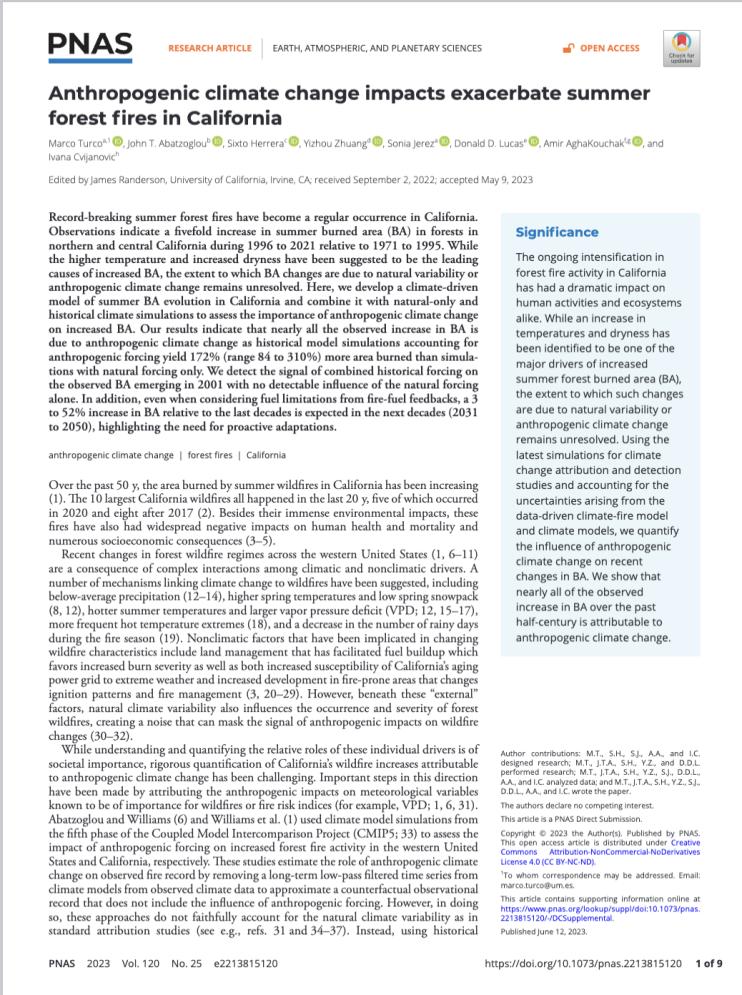Anthropogenic Climate Change Impacts Exacerbate Summer Forest Fires in California
This article in Earth, Atmospheric, and Planetary Sciences was the result of NIDIS-supported research. Learn more about this research.
Record-breaking forest fires during California’s summer months have become a regular occurrence. Wildfires not only cause catastrophic environmental and socioeconomic impacts, but also have negative consequences for human health. Environmental observations indicate that summer burned areas in northern and central California have increased fivefold during 1996 to 2021 compared to 1971 to 1995. Further, 10 of the largest California wildfires have occurred in the last 20 years—five of which occurred in 2020 alone. While higher temperatures and increased dryness are thought to be the leading causes of increased burned areas, the extent to which burned area changes are due to natural variability or human-caused climate change has remained largely unresolved. In this study, an international group of researchers created a climate-driven model of summer burned area evolution in California and combined it with natural and historical climate simulations to assess the importance of human-caused climate change on increased burned areas.








